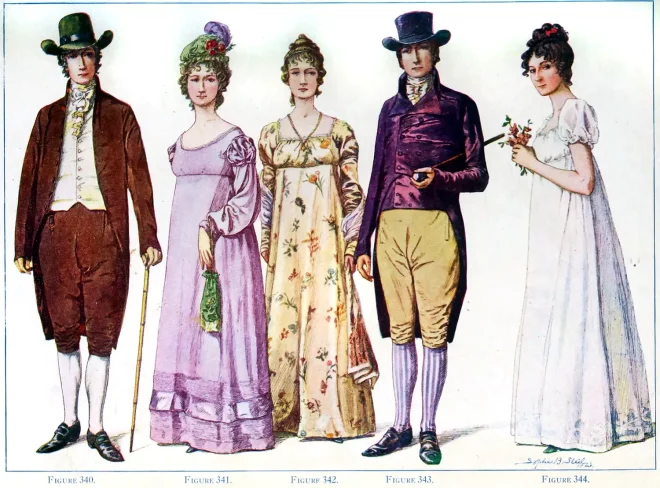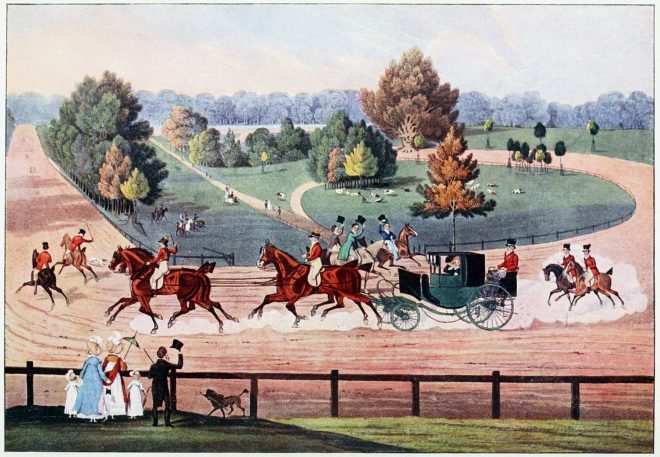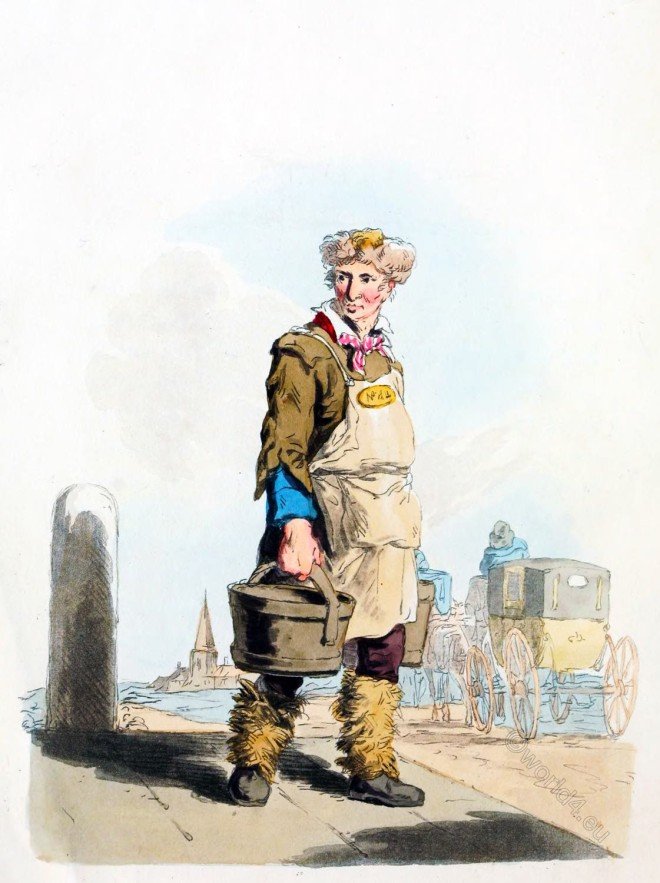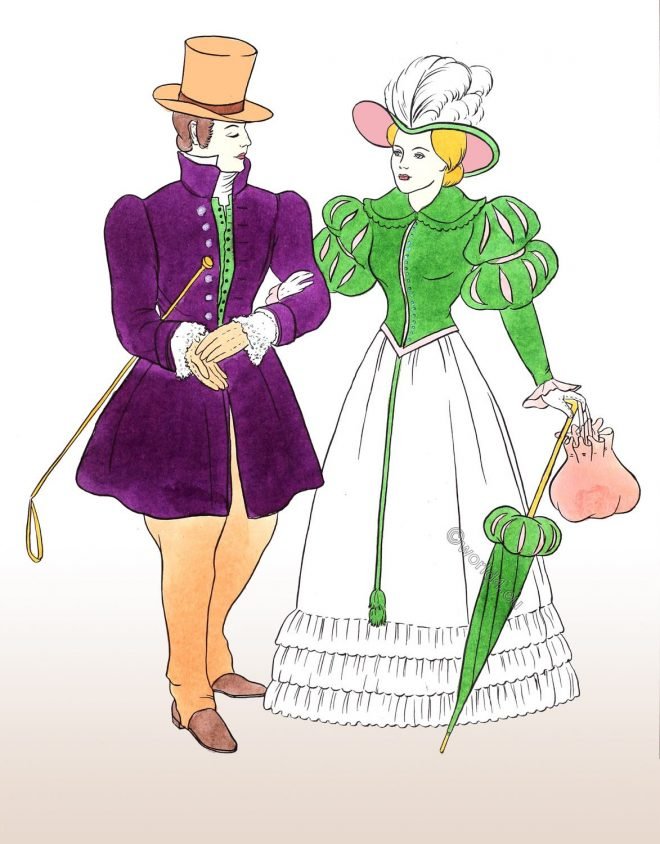The Corset and the Crinoline. Chapter VII. Starving and Lacing. Louis XVI Dress in 1776. George III.
Category: Regency period
Fashion and costumes of the English Regency period between 1795 and 1837. The transition between “Georgian” and “Victorian” eras. In France the transition from the late Directory to The Napoleonic First Empire era 1804 to 1814, Restoration period 1814 to 1830 (Romantic period, German Biedermeier).
Portrait of Queen Catherine Paulovna of Württemberg
Miniature portrait of Queen Katharina Paulowna (Romanova) of Württemberg c.1820, daughter of Paul I of Russia by Dietrich Jakob Christian Mathes.
Costumes during the Republic under Washington and Adams.
Historic dress in America during the Republic under George Washington and John Adams.
The Kit-Cat club. Clubs and club life in London
This famous Club was a threefold celebrity—political, literary, and artistic. It was the great Society of Whig leaders, gallant as well as political.
Attitudes by Emma, Lady Hamilton (1765-1815)
Emma, Lady Hamilton (1765-1815) was a Europe-wide celebrated beauty, artist and socialite of the 18th and beginning of the 19th century.
Library Window Curtain. Regency era 1815.
Design for grand architectural additions and drapes that add Palladian or Venetian proportions to a narrow window bay.
View of a waterman to a coach stand, carrying two pails of water.
At every stand for hackney-coaches in the metropolis, there is one or more persons termed watermen, whose occupation is to attend to the horses.
Empire Romantic. Young lady wears a ballroom ensemble of the 1820’s.
History of Costume. Empire Romantic Era of the middle or late 1820’s. Young lady wears a ballroom ensemble. Young man dressed in evening clothes.
A splendid example of the late 1820’s fashion. Romantic period.
The hand bag and parasol illustrate two of the most common accessories of the 19th century.
Empire Romantic period. Formal evening wear. Party dress.
The party dress here shows definite leanings toward the Romantic period, which began with 1815.










